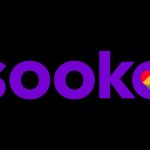
Astro claims that 80% of Malaysian households are its customers.
Malaysia-based satellite television operator Astro is finding it a challenge to bridge the generational gap between people who are primarily entertaining themselves on television and those who are primarily entertaining themselves through over-the-top (OTT) platforms.
Christian Toksvig, the head of OTT at Astro tells that Astro is very heavily penetrated with the older segment of the population in Malaysia. As such, Astro is working out ways to take the content from TV that resonates with younger people and bringing it to them via OTT.
“Asking people to change your entertainment habit is really hard because you’re used to watching the news at a certain time and watching entertainment at a certain time,” the Dane adds, on the sidelines of Vidcon Asia Summit.
To address this challenge, Astro unveiled a fresh new look and added a couple of new features in July, like easier navigation, an enhanced search function and an interactive home page to its OTT platform AstroGo, which it first launched in 2012.
Toksvig says this will help Astro ensure it can attract the attention of younger audiences, which the competition like Netflix and locally, iFlix, are competing for.
“We have been thinking about this quite a lot. Are we a TV broadcaster or are we a content aggregator? It’s the same thing but it is a different definition,” he explains, noting that about 76% of all content in Malaysia is created by Astro and its free-to-air service Njoi.
“If I say I’m a TV guy, then Netflix is not a TV guy. So, therefore, I’m not doing the same thing as Netflix is. Right? But if I say I’m a content aggregator, then I am doing the same thing as Netflix. Because what I do is I find content and I put it together in a package and I give it to you as a consumer.”
He adds: “Before the days of apps, what TV did was taking content from different suppliers and packages together in a linear bundle. Netflix takes content from a lot of suppliers and packages it together in an OTT bundle. The only difference is the delivery mechanism and the convenience of starting when you want. So we really don’t see ourselves as competing with these services, but facilitating these services to our customers.”
Astro also believes it is well placed to cope with the challenges as it claims that 80% of Malaysian households are its customers. According to Toksvig, that means the cable operator has a direct relationship with them because of billing and own Astro’s hardware in their homes connected to their televisions.
However, as Astro’s current technology is unable to take content from suppliers and package it into an OTT bundle like Netflix, it needs to work on changing its set-top boxes to change its delivery.
“It’s no secret that like in many countries globally, people are cord-cutting in Malaysia too. That means there is a structural change because people are discovering the new services and that new services are cheaper. Therefore people are starting to look at how much they have been paying for TV and how much do they want to pay for a new service,” says Toksvig.
“I think the TV industry was a bit slow in waking up to that and realising that because you have the billing relationship and because you have the hardware in the home, you actually have the best starting point to deliver all these services. Initially, the industry said, no, we don’t want to have anything to do with them.”
He continues: “What I want to see in 2020 and going forward is Astro delivering its own services and delivering a lot of other partner services. So that if you’re a consumer, you can just look one place for everything you want. I can pay one bill to Astro and get all my different apps. That is the vision.”
Looking ahead, Toksvig is worried that the increasingly fragmented streaming landscape will ultimately result in consumers will have to decide what to pay for and what to leave behind.
He observes when consumers hear about a new show, they have to run around to figure if the show is on Amazon Prime, Netflix, or HBO, making them feel frustrated.
This is because there is no one service right now that can assertively inform consumers where to find and watch the show they want. He says this could result in a rise in piracy.
“Piracy is basically just satisfying unmet demand. So if the demand, for example, in music, right, in the West, piracy in music has really fallen a lot because the legitimate services like Spotify and Apple Music are now sufficiently cheap and good that people don’t bother pirating anymore,” he explains.
“I can just pay 10 Euro and have my music. We are not at that point in video yet because the services are still not good enough and cheap enough, from a consumer perspective, to basically convince me to not pirate content.”
source: https://www.thedrum.com/
MARKETING Magazine is not responsible for the content of external sites.











